How to Care for Milkweed Plants in Winter
Seeds Ideas, Tips & Guides

How to Grow Napini Kale
How to Grow Napini Kale

When to plant collard greens from seeds or transplants
Knowing when to plant collard greens is key to their success. They can be grown directly from seeds or the seedlings transplanted into garden beds or containers to get a head start on the harvest. When deciding how and when to plant collard greens, your local climate and the length of your growing season are some of the most important factors to consider. In this article you’ll learn about the importance of timing, when to start collard green seeds indoors, when to direct sow outdoors, when to transplant seedlings, and get tips for growing healthy plants.

Monstera Growth Stages Explained
Monsteras are popular indoor plants that stand out with their lush foliage having unique cuts! Growing it involves witnessing various stages that you should be aware of to understand its requirements better.

Is Lily of the Valley Invasive?
Is Lily of the Valley Invasive?

Bradford and Callery Pear
Every spring, all over South Carolina, we see yards, abandoned lots, natural areas, roadsides, and, in some cases, forests fill with white flowers. These first white flowers of the year are nearly all from the Callery pear tree (Pyrus calleryana). This tree is native to China, and while they may look the same, many of the trees planted in yards, around businesses, and in other managed landscapes across South Carolina are cultivars of P. calleryana. One of the most common cultivars is the Bradford pear (more information on Bradford pears can be found on this Clemson HGIC fact sheet HGIC 1006, Bradford Pear). Bradford pears, by themselves, cannot produce viable seed. But, if pollen from a different flowering pear cultivar (or a wild Callery pear) pollinates a Bradford pear flower, then viable seed can be produced. The fruit is often eaten by birds, and birds doing what birds do (hint: they fly and poop), spread the seeds across the land. When these new plants grow, they’re now Callery pears, the wild relative of Bradford and other cultivated varieties of Pyrus calleryana.

7 Stunning Purple Sunflowers
Picture a sunflower that comes in a shade no would would ever imagine! That’s what the blossoms in this list are all about!

Seven of the Best Dahlias
Big, bold and brassy – dahlias dazzle in the border and and in a vase. Originating in Mexico, dahlias were first introduced to Europe to be grown for food. However, the unpalatable tubers lead to them instead being grown and bred for their flowers.

Livingstone Daisy Mesembryanthemum crinifolium
The bright neon like colours of these daisies make every garden brighter. The ground hugging plants will spread about 4 inches then be covered in masses of flowers that close up slightly in the late afternoon.
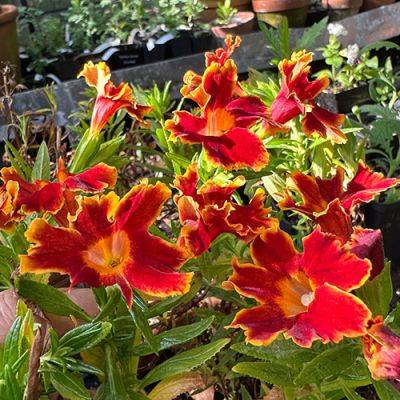
New and Unusual Annuals to Try in Your Garden This Summer
Gardening is, or at least should be, an ongoing learning process. It can include trial and error (and sometimes failure), but for me, the most exciting part is discovering new plants. When I find an unfamiliar plant, it’s pretty exciting, since I’ve grown nearly everything over the years and not much surprises me.

Monty's gardening jobs for March
Now March has arrived, it’s tempting to rush into the garden with the seed packets, but the weather can still be freezing cold, so it’s not a good idea to sow crops outside just yet. Instead, focus on sowing seeds inside and taking care of overwintering plants, while the weather warms and the days lengthen.

Grow a Bucket Full of Peppers with These 9 Tricks
The methods in this article will ensure that your peppers produce more flowers, which will automatically equate to a plant full of fruits!

Drinks Industry without Farmers and Gardeners
A native of China, tea leaves were delivered around the world in Clipper ships, created the furore at the Boston Tea Party during the American war of independence and still provides badly paid work for workers in India, Sri Lanka, Kenya and China.

How To Start Plants From Seeds, According To An Expert
<use xlink:href="#trending-icon" xmlns:xlink=«http://www.w3.org/1999/xlink»> Trending Videos <use xlink:href="#close-icon" xmlns:xlink=«http://www.w3.org/1999/xlink»>
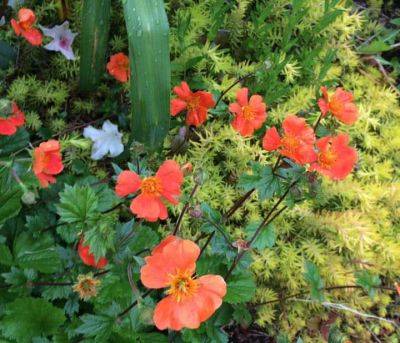
Growers Guide for Geum Plants
A genus of hardy herbaceous perennials, some of which are useful border plants, the dwarf species are good rock garden plants. Several are natives of the British Isles but those valued for gardens are from Europe, South America, and the Near East.

Growers Guide for Bee Balm – Monarda Plant
Named after a sixteenth-century Spanish physician and botanist, Nicholas Monardes (Labiatae). A small genus of annual and perennial herbs from North America, with fragrant leaves and flowers, related to Salvia. The leaves are nettle-like, and the flowers have a spiky appearance and are clustered together in whorls: the color ranges from white through pink, mauve, and purple to red.
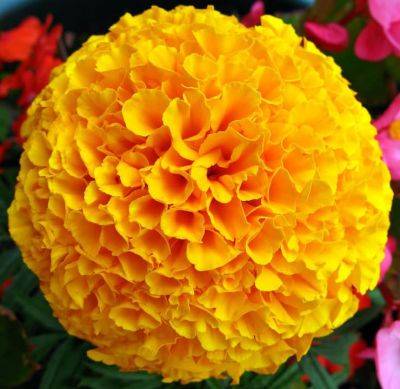
Growing and planting African and French Marigolds
Marigolds (Tagetes ) are annuals of great decorative value during the summer and autumn months. They are natives of Mexico and South America and belong to the Daisy family, Compositae. The name is said to have been derived from a mythological deity, Tages. These Marigolds are quite distinct from the Pot Marigold or Calendula.

Growers Guide for Veronica – Speedwell
Origin doubtful, possibly named after St Veronica (Scrophulariaceae). Speedwell. A genus of some 300 species ‘ of hardy perennials, annuals and sub-shrubs, mainly from northern temperate regions. Those described are hardy perennials, their flowers often borne in spikes. Dwarf kinds are suitable for the rock garden.

Growers Guide for Sweet Pea – Lathyrus
A genus of hardy annual and herbaceous perennial climbers from temperate zones and tropical mountains.

How to Plant and Grow ‘Dark Opal’ Basil
How to Plant and Grow ‘Dark Opal’ Basil Ocimum basilicum var. basilicum ‘Dark Opal’

22 Houseplants That Grow Best From Division
Different botanical specimens perform best in different propagating scenarios – some grow best from cuttings, while some develop better from seeds. However, there are also houseplants that grow the best from division! Let’s learn about them in detail!
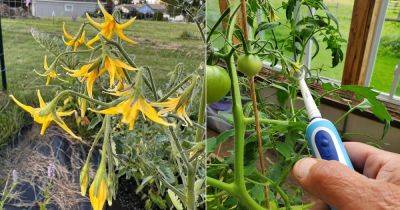
Tickle Your Tomato Plants Like This for Bumper Harvest
While this may sound something straight out of some fairy tale, but this actually works! Tickle, and see your tomatoes producing bumper fruits!

How to Plant and Grow Aztec Sweet Herb
How to Plant and Grow Aztec Sweet Herb Phyla dulcis

OUTER SPACE FLOWERS – Gardening
In many places in the United States columbines (Aquilegia ssp.) still grow wild. Highbrow hybrids dominate the marketplace, but even they seem to retain some of that wildness. While cleaning out an overgrown greenhouse once, I noticed columbines of indeterminate variety growing up through the cracks between the slate floor’s slabs. In my own garden they tend to self-seed, coming up everywhere but where I intend them to be. They are much like cats, domesticated to a point, but still inclined to go their own way.

Growers Guide for Bear’s Breech – Acanthus
Bear’s breech is a Handsome, hardy perennial known to the Greeks and Romans, who used the leaf form of Acanthus mollis to decorate the Corinthian column.

Growers Guide for Pot Marigold
Showy annual plants from southern Europe belonging to the Daisy family, Compositive. They have simple alternate leaves and branching stems 1 1/2-2 1/2 ft. high, bearing large heads of yellow, yellowish or orange-colored flowers which are in full beauty during the summer. Calendula is derived from calendae, the calends, the first day of the ancient Roman month-an allusion to the almost continuous flowering character of this plant. Calendulas do best in full sunshine and in rather dry soil. They are raised, from seeds sown out of doors in the spring or early autumn where the plants are to bloom the following year and are very easy to cultivate.
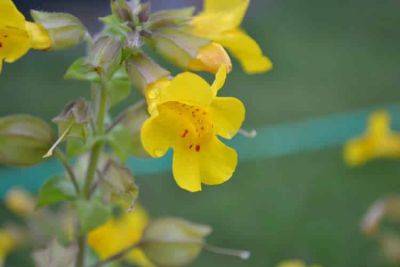
Growers Guide for Monkeyflowers
From the Greek mimo, ape; the flowers were thought to look like a mask or monkey’s face (Scrophulariaceae). Monkeyflower, monkey musk, musk. A genus of hardy annual, half-hardy perennial, and hardy perennial plants grown for their showy flowers. They are found in many temperate parts of the world, particularly North America.
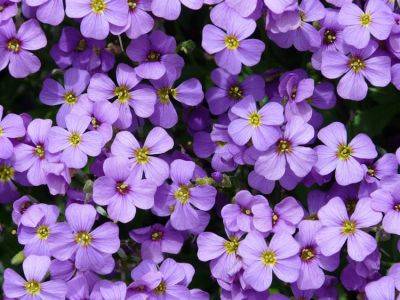
AUBRIETA THE PURPLE ROCK CRESS
Hardy, perennial, more or less evergreen, low-growing plants which bear a profusion of bloom in early spring. They are invaluable in the rock garden and wall garden, as edging to flower borders, and as groundwork for taller plants in spring flower beds. Unfortunately, they are apt to be rather short-lived where hot summers prevail. Young plants seem better able to withstand adverse conditions than older ones; hence it is a good plan to raise some new plants each year. They may, in fact, be successfully treated as biennials. They are widely distributed in mountainous regions along the coast of southern Europe and Persia and belong to the Mustard family, Cruciferae. Aubrieta (previously spelled Aubrietia) is named after Claude Aubriet, a French painter of natural history subjects.

Growers Guide for Heathers, Erica and Callunas shrubs
Small, hardy, evergreen shrubs which grow wild in many parts of Europe and in a few localities in North America. They belong to the Heath family, Ericaceae. The name is derived from kallunein, to sweep. Branches are used as brooms. Only one species. is known, Callunas vulgaris, the common Heather or Scotch Heather, but it has many varieties which differ widely in stature, the color of flowers and color of leaves.
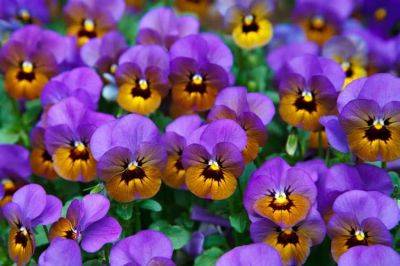
Growers Guide for Viola – Perennial Plant
An old Latin name for violet (Violaceae). A genus of some 500 species of hardy perennials, mainly from northern temperate regions, including violas, pansies, and violets, of which there are many hybrids and strains.

30 Best British Trees and Shrubs and How to Identify Them
Britain and Ireland have between 32 and 35 native tree species. Numbers differ depending on how many individual species of elms and whitebeam are included, whether hybrids are listed, and which species are counted as trees and which as shrubs.

13 of the best heated propagators and heat mats in 2024
Whether you’re starting seeds off in the cold, winter months, encouraging cuttings to root or raising tender plants originally from warmer climates, a constant heat source will help create the best conditions to nurture them. Heated propagators are an ideal accessory which, depending on the type you choose, either offers a consistent, ambient temperature or can be set at a particular temperature to suit your needs. Because of our cooler temperatures, warmer climate plants like tomatoes, aubergines, chilli and bell peppers and squashes need a long growing season to give them time to grow, flower, produce fruit and for the fruit to ripen. Germinating them indoors in a heated propagator early in the year, when outside it would be much too cold for them to grow, ensures they get the long growing season they need. But even hardier and native plants benefit from being germinated at a constant temperature.

Coreopsis Flower Meaning and Symbolism
Coming in different patterns and colors, Coreopsis flowers also signiy the deeper aspects of life. Let’s have a look at them in detail!

How to Grow Impatiens from Seed
How to Grow Impatiens from Seed

Complete Guide to Dock Leaves
Dock plant or dock leaf is a perennial native plant usually referred to simply as ‘dock’. While generally considered a weed in gardens due to its abundant seeding and persistent, vigorous growth, dock is an excellent wildlife plant as the leaves are an important food plant for many insects, including caterpillars, which are eaten by birds and hedgehogs. Applying dock leaves to soothe nettle strings is a traditional remedy.

How to Grow and Care for Sea Buckthorn
How to Grow and Care for Sea Buckthorn Hippophae rhamnoides
Popular Topics
Welcome to the "Seeds" section of diygarden.cc! Here, we delve into the fascinating world of seeds and provide you with valuable information to help you unlock the potential of these tiny powerhouses in your gardening endeavors.
They are the reproductive structures produced by plants, the result of fertilization and contain the embryonic plant, along with a supply of nutrients to support its initial growth.
Seeds play a crucial role in the plant life cycle, enabling plants to reproduce and spread to new locations. Seeds are typically formed within the reproductive structures of plants, such as flowers, cones, or fruits. Inside a seed, there is an embryo, which consists of the young plant in a dormant state. This embryo has a root, stem, and one or more leaves, which will develop into the mature plant.
In addition to the embryo, a seed also contains a food source called the endosperm or cotyledon. The endosperm provides essential nutrients, such as carbohydrates, proteins, and fats, to support the early growth of the germinating seedling until it can establish its own photosynthetic capacity.
Seeds come in various sizes, shapes, and structures, depending on the plant species. They may be tiny and barely visible to the naked eye, like those of orchids, or large and easily recognizable, like the seeds of sunflowers. Some seeds have protective coverings, such as hard shells or husks, while others are enclosed within fleshy fruits.Our "Seeds" section of diygarden.cc provides you with valuable knowledge, tips, and techniques to embark on your gardening journey.
Our site greengrove.cc offers you to spend great time reading Seeds latest Tips & Guides. Enjoy scrolling Seeds Tips & Guides to learn more. Stay tuned following daily updates of Seeds hacks and apply them in your real life. Be sure, you won’t regret entering the site once, because here you will find a lot of useful Seeds stuff that will help you a lot in your daily life! Check it out yourself!
